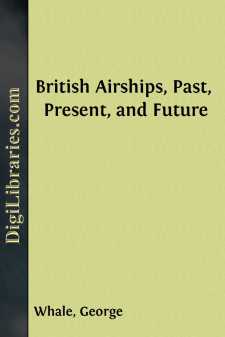Categories
- Antiques & Collectibles 13
- Architecture 36
- Art 48
- Bibles 22
- Biography & Autobiography 813
- Body, Mind & Spirit 142
- Business & Economics 28
- Children's Books 14
- Children's Fiction 11
- Computers 4
- Cooking 94
- Crafts & Hobbies 4
- Drama 346
- Education 46
- Family & Relationships 57
- Fiction 11829
- Games 19
- Gardening 17
- Health & Fitness 34
- History 1377
- House & Home 1
- Humor 147
- Juvenile Fiction 1873
- Juvenile Nonfiction 202
- Language Arts & Disciplines 88
- Law 16
- Literary Collections 686
- Literary Criticism 179
- Mathematics 13
- Medical 41
- Music 40
- Nature 179
- Non-Classifiable 1768
- Performing Arts 7
- Periodicals 1453
- Philosophy 64
- Photography 2
- Poetry 896
- Political Science 203
- Psychology 42
- Reference 154
- Religion 513
- Science 126
- Self-Help 84
- Social Science 81
- Sports & Recreation 34
- Study Aids 3
- Technology & Engineering 59
- Transportation 23
- Travel 463
- True Crime 29
British Airships, Past, Present, and Future
by: George Whale
Description:
Excerpt
INTRODUCTION
Lighter-than-air craft consist of three distinct types: Airships, which are by far the most important, Free Balloons, and Kite Balloons, which are attached to the ground or to a ship by a cable. They derive their appellation from the fact that when charged with hydrogen, or some other form of gas, they are lighter than the air which they displace. Of these three types the free balloon is by far the oldest and the simplest, but it is entirely at the mercy of the wind and other elements, and cannot be controlled for direction, but must drift whithersoever the wind or air currents take it. On the other hand, the airship, being provided with engines to propel it through the air, and with rudders and elevators to control it for direction and height, can be steered in whatever direction is desired, and voyages can be made from one place to another--always provided that the force of the wind is not sufficiently strong to overcome the power of the engines. The airship is, therefore, nothing else than a dirigible balloon, for the engines and other weights connected with the structure are supported in the air by an envelope or balloon, or a series of such chambers, according to design, filled with hydrogen or gas of some other nature.
It is not proposed, in this book, to embark upon a lengthy and highly technical dissertation on aerostatics, although it is an intricate science which must be thoroughly grasped by anyone who wishes to possess a full knowledge of airships and the various problems which occur in their design. Certain technical expressions and terms are, however, bound to occur, even in the most rudimentary work on airships, and the main principles underlying airship construction will be described as briefly and as simply as is possible.
The term "lift" will appear many times in the following pages, and it is necessary to understand what it really means. The difference between the weight of air displaced and the weight of gas in a balloon or airship is called the "gross lift." The term "disposable," or "nett" lift, is obtained by deducting the weight of the structure, cars, machinery and other fixed weights from the gross lift. The resultant weight obtained by this calculation determines the crew, ballast, fuel and other necessities which can be carried by the balloon or airship.
The amount of air displaced by an airship can be accurately weighed, and varies according to barometric pressure and the temperature; but for the purposes of this example we may take it that under normal conditions air weighs 75 lb. per 1,000 cubic feet. Therefore, if a balloon of 1,000 cubic feet volume is charged with air, this air contained will weigh 75 lb. It is then manifest that a balloon filled with air would not lift, because the air is not displaced with a lighter gas.
Hydrogen is the lightest gas known to science, and is used in airships to displace the air and raise them from the ground. Hydrogen weighs about one-fifteenth as much as air, and under normal conditions 1,000 cubic feet weighs 5 lb....


